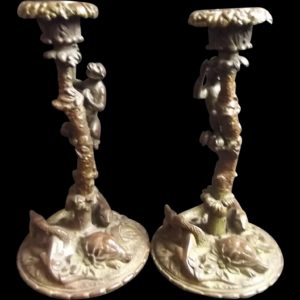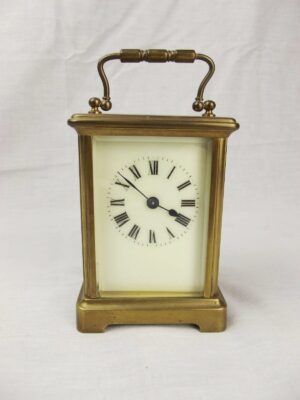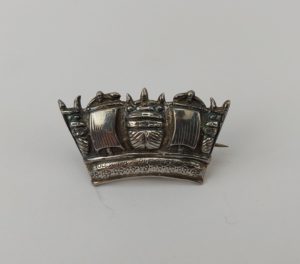*RARE: USA, mid 1960, Four Ansen Automotive Engineering (AAE) True Knock-Off Wheel Spinners Centre Caps, from a Chevrolet Corvette*
Marked on the outside: “AAE” , Three RH OFF Arrows and one LH OFF Arrow on the Centre Caps.
Marked inside of each arm: “Ansen”, “Ser. No.”, three marked – “Alcoa WS 101” one marked: “Alcoa WS 202″
3” diameter grooved hole.
They were made by Ansen Automotive Engineering, California. It is said that there were only about 120 sets ever made of these spinners.
On page 17 of “Merchants of Speed: the men who built America’s performance industry” A small cut away of the Ansen Arrow wheel is shown and the caption reads ” Ansen developed the first “real” knock-off spinner for street use. The kit bolted on to early-model Corvette wheels. It was about to be marketed but an unexpected incident with a similar spinner forced them to scrap the project. Courtesy Lou Senter“. Ansen Automotive traces its origins to machinist Louis Senter. A California native, Louis served as a machinist’s mate in the Navy during World War II. After the war, he worked with Eddie Meyer, a flathead Ford speed part supplier and Indianapolis 500 riding mechanic. Louis, along with his brother Sol, opened Senter Engineering, a machine shop in Los Angeles, where they catered to custom projects for hot rodders. In 1947, they partnered with engine-building specialist Jack Andrews, and the trio combined their last names to form Ansen Automotive Engineering.
The new company developed numerous performance parts for early Fords and began building dry lakes racers, midget racers, and drag racers. Ansen Automotive also produced complete engines that were popular among Southern NASCAR drivers, moonshiners, and revenue agents. The early 1960s marked a prolific period for Ansen Automotive. Following the dissolution of the partnership, Louis became the sole owner and focused on developing one- and two-piece aluminum wheels for race cars. Ansen’s aluminum wheels were the first to be approved for use at Indy, where Halibrand’s lightweight magnesium wheels were dominant. Designed in 1963, these aluminum wheels were crafted using Louis’s innovative centrifugal casting machine and a tracer lathe to feature a machined finish. They had five oval slots for brake cooling and a visible brand name casting. Known as the Sprint, this wheel design quickly transitioned from racing to street use, available in 14- and 15-inch diameters and various widths, gaining immense popularity. After Ansen Automotive went out of business, the Ansen trademark and product line were acquired by Els Lohn of EELCO.
Hot Rod Culture: Ansen Automotive played a significant role in the development of hot rod culture in Southern California. Their contributions to the performance and customization of vehicles helped shape the aesthetic and technical standards of hot rodding during its formative years.
Enduring Influence: The company’s influence extends beyond just products; it helped foster a community of enthusiasts who valued innovation, performance, and the spirit of competition. This community continues to thrive, celebrating the legacy of early pioneers like Louis Senter and Ansen Automotive.
By pushing the boundaries of performance and design, Ansen Automotive helped lay the foundation for the modern automotive aftermarket industry, and their legacy continues to inspire new generations of car enthusiasts and racers.
*Condition*
These are in excellent used condition. Please see photographs as part of the condition report.
JAQEOOXBEOO_3819167064























